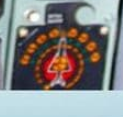As you can see this jet only has one MFD which proves that the cockpit seen in the brochure is accurate(Although there’s slight differences, I have explained that in the previous replies)
Video credit:@ice-muff
do you know if it’s still stuck with spo-15 rwr, or was it upgraded with l-150? @Miraz05
in the original brochure it still has spo 15 in cockpit

satellite m-2 stats
IMO this means it would basically act as a modern rwr, as it can classify and ID threats and stuff. unfortunately it comes with added weight instead of an integrated rwr like l-150, but hey at least it can act like a modern rwr
| Parameter | Value |
|---|---|
| Operating frequency range | 4.0–18.0 GHz |
| Output power | 10–20 W |
| Protection sector (azimuth plane) | ± 180° |
| Protection sector (elevation plane) | ± 30° |
| Ready-to-operate time | ≤ 2 s |
| Continuous operation time | ≥ 60 min |
| Total power consumption | ≤ 1.5 kW |
| Weight per container | ≤ 120 kg |
| Impact on enemy radar operation | Disruption ≥ 1.3 × RCS |
source
translation of full brochure for satellite m-2
558 Aviation Repair Plant (Open Joint-Stock Company)
“SATELLITE-M2”
RADIO-ELECTRONIC PROTECTION EQUIPMENT
OAO “558 Aviation Repair Plant”
Republic of Belarus, Baranovichi
ISO 9001 certified enterprise
The “Satellite-M2” radio-electronic protection system is designed to protect aircraft from being hit by high-precision, radio-guided weapons—air-to-air missiles (AAMs) and surface-to-air missile systems (SAMs)—operating in the 4.0–18.0 GHz frequency range, both from the front and rear hemispheres.
Illustrations show jamming of both aircraft-launched missiles (AAMs) and ground-based SAMs.
The “Satellite-M2” consists of two podded containers mounted on weapon hardpoints.
Each pod contains a set of modules enabling independent operation in both the forward and rear hemispheres.
Each complex includes:
The photo captions show examples of internal modules and an MFD (multi-function display) screen in the cockpit.
To ensure highly effective radio-electronic protection, the system creates simulated radar targets that imitate the aircraft’s radar signature, diverting missile guidance systems.
Functions:
Graphics show the spoofing of radar tracking and missile seeker deviation.
Monopulse radars of AAMs and SAMs, including:
Surface-to-air missile systems:
Air-to-air missiles:
Special test programs can be conducted on the customer’s territory to confirm protection effectiveness.
Blue line – flight path of the aircraft with “Satellite-M2” (GPS data)
Red line – maneuvering target’s path (radar tracking).
Graphs show the decrease in radar tracking precision when “Satellite-M2” is active.
| Parameter | Value |
|---|---|
| Operating frequency range | 4.0–18.0 GHz |
| Output power | 10–20 W |
| Protection sector (azimuth plane) | ± 180° |
| Protection sector (elevation plane) | ± 30° |
| Ready-to-operate time | ≤ 2 s |
| Continuous operation time | ≥ 60 min |
| Total power consumption | ≤ 1.5 kW |
| Weight per container | ≤ 120 kg |
| Impact on enemy radar operation | Disruption ≥ 1.3 × RCS |
Photos show each configuration.
Control can be performed both before takeoff and during flight using a cockpit switch.
Operational status is displayed on the aircraft’s MFD.
Automatic selection of interference type depending on the threat ensures simultaneous defense against all active enemy SAMs.
Maintenance is performed using the built-in control and test system.
Results are displayed via diagnostic interfaces, allowing pre- and post-flight verification of system readiness.
Records can be automatically logged for mission effectiveness analysis.